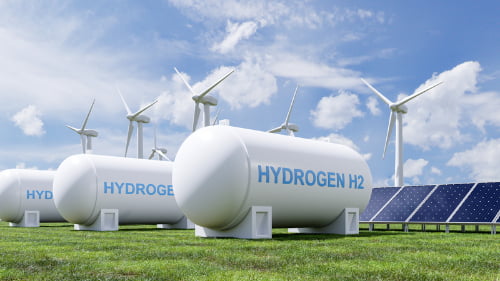
The era of hydrogen energy is rising. Whether in power generation, transportation, oil refining or chemical industry, hydrogen is gradually replacing fossil fuels and becoming a promoter of energy transformation. It is a key player in realizing low-carbon green energy in industry.
What Is Hydrogen Energy?
Hydrogen Energy is a new type of renewable energy. Since hydrogen does not contain carbon in its molecular structure, the use and production of hydrogen energy can significantly reduce carbon dioxide emissions. In addition, excess electricity from renewable energy sources such as wind energy and solar energy can also be used to convert water into hydrogen through electrolysis. It can be stored in large amounts for a long time and converted into electrical energy when needed, and can be seen that hydrogen is a clean, environmentally friendly, efficient, and multi-functional energy carrier.
What Is Hydrogen? Does Hydrogen Also Have Colors?
Hydrogen does not exist in nature. It needs to be manufactured, which can be obtained through the electrolysis of water or steam recombination through renewable energy. Even though hydrogen will only produce water after combustion or chemical reaction, and will not emit carbon or pollutants, the carbon emissions generated in the process will still vary depending on the source of materials and production methods. Color labels are commonly used to distinguish hydrogen type.
1. Gray Hydrogen
Utilizing fossil fuels such as natural gas (methane) for steam reforming, water vapor reacts with hydrocarbons to convert hydrogen, which is the most commonly used and lowest-cost manufacturing method today. The disadvantage is that the by-products emitted contain a large amount of carbon dioxide.
2. Green Hydrogen
Hydrogen is produced by electrolyzing water from renewable energy sources such as wind and solar energy or nuclear energy. The advantage is that there are almost zero carbon emissions in the process. The disadvantage is that the cost of electrolyzer equipment is high, and the water electrolysis conversion efficiency is only about 70 to 80%.
3. Blue Hydrogen
Hydrogen is produced by steam reforming fossil fuels such as natural gas (methane), but performing carbon capture and storage (CCS) in the process.
4. Brown Hydrogen
The disadvantage of hydrogen produced through coal gasification is that carbon dioxide and carbon monoxide are released as by-products during the production process, which causes a high degree of environmental pollution.
To achieve the goal of net-zero emissions in 2050, the proportion of low-carbon hydrogen such as green hydrogen and blue hydrogen must be gradually increased. Countries are committed to developing mature green hydrogen manufacturing technology to alleviate global warming and energy crises.
Electrolyte Circulation
In the electrolysis technology for producing green hydrogen, a key step is to pass current into an electrolytic tank filled with electrolyte (usually potassium hydroxide) so that the electrolyte and water are mixed and circulated between the cathode and anode, and then Chemical reaction, decomposition into hydrogen and oxygen.
In this electrolysis circulation system, the PTCXPUMP sealless magnetic pump, with no leakage and corrosion resistance, ensures safe use and becomes the best solution for transporting potassium hydroxide or other electrolytes.
Hydrogen Economy
Hydrogen Economy was proposed by General Motors (GM) in the United States in 1970. It refers to a new economic structure that replaces petroleum with hydrogen and widely uses hydrogen as the main energy carrier. With the trend of hydrogen economy, innovative and advanced hydrogen utilization methods will gradually be developed, and wider application fields and markets will also appear at the same time.
However, hydrogen is an explosive gas and is easy to leak. In addition, hydrogen molecules are small and can easily penetrate into metal materials, resulting in reduced ductility and "hydrogen embrittlement". Therefore, there are special needs for pumps that handle and transport hydrogen.
Conveying Solutions without Any Concerns about Leakage
In order to save storage space, hydrogen must be compressed and liquefied before transportation. A compressor is used to compress gaseous hydrogen, and then the hydrogen is cooled and converted into liquid hydrogen. Storage of liquid hydrogen needs to be kept at low temperature and resistant to high pressure, so complete airtightness is the key to hydrogen production equipment. One of the most important aspects of the system. To avoid hydrogen leakage or external gas mixing into hydrogen, causing the gas to contain impurities, a sealless magnetic pump must be used, which helps improve efficiency and cost management.
If you are ready to join the global trend of net-zero carbon emissions, welcome to contact us to choose the best pump for your hydrogen energy application.
The best solution for chemical fluid transportation》PTCXPUMP sealless magnetic pump / INNOMAG Lined Sealless Magnetic Pump




